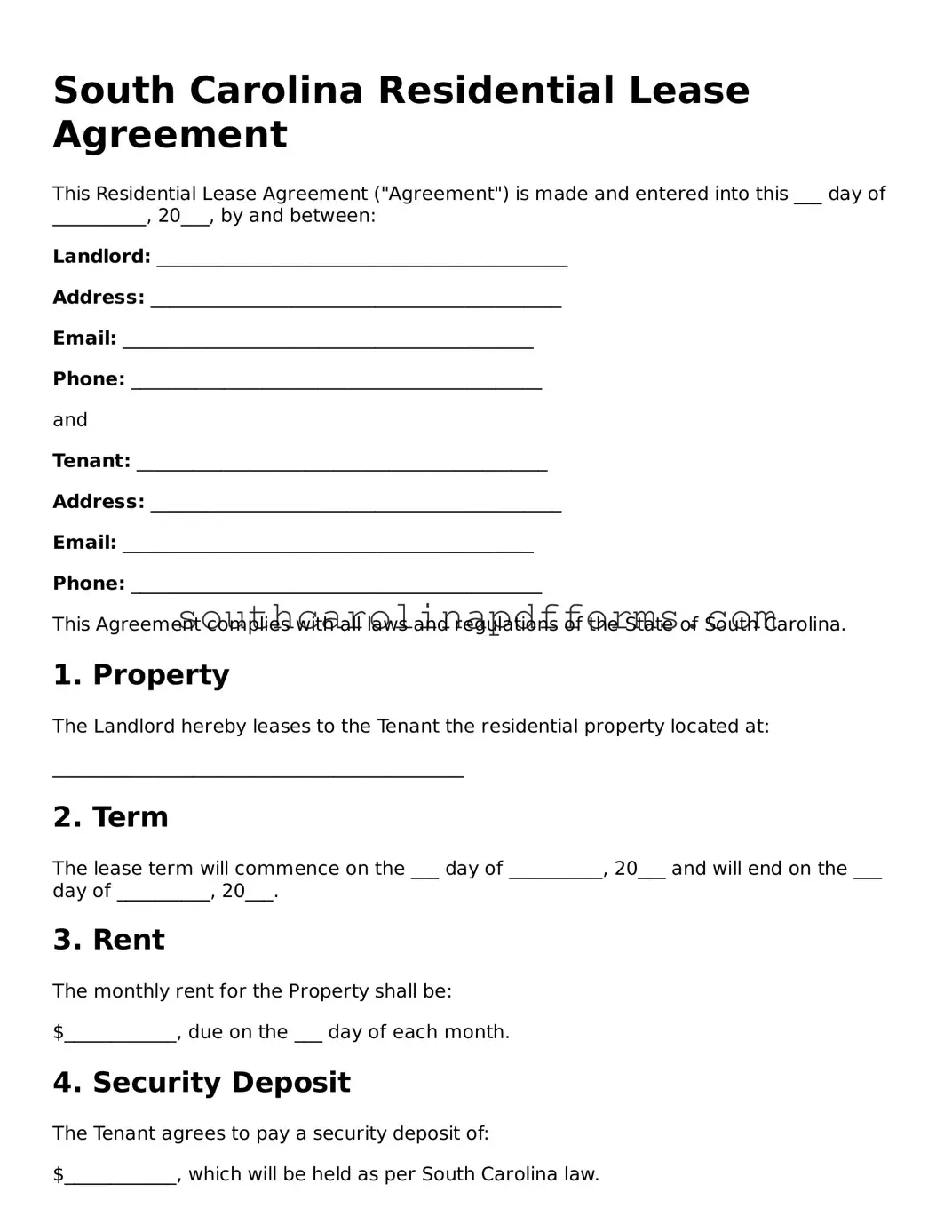Attorney-Approved South Carolina Residential Lease Agreement Document
A South Carolina Residential Lease Agreement is a legally binding contract between a landlord and a tenant for renting residential property. This document outlines the terms and conditions of the rental arrangement, including the duration of the lease, rental payments, and responsibilities of both parties. Understanding this form is essential for ensuring a smooth rental experience in South Carolina.
Access Residential Lease Agreement Here
